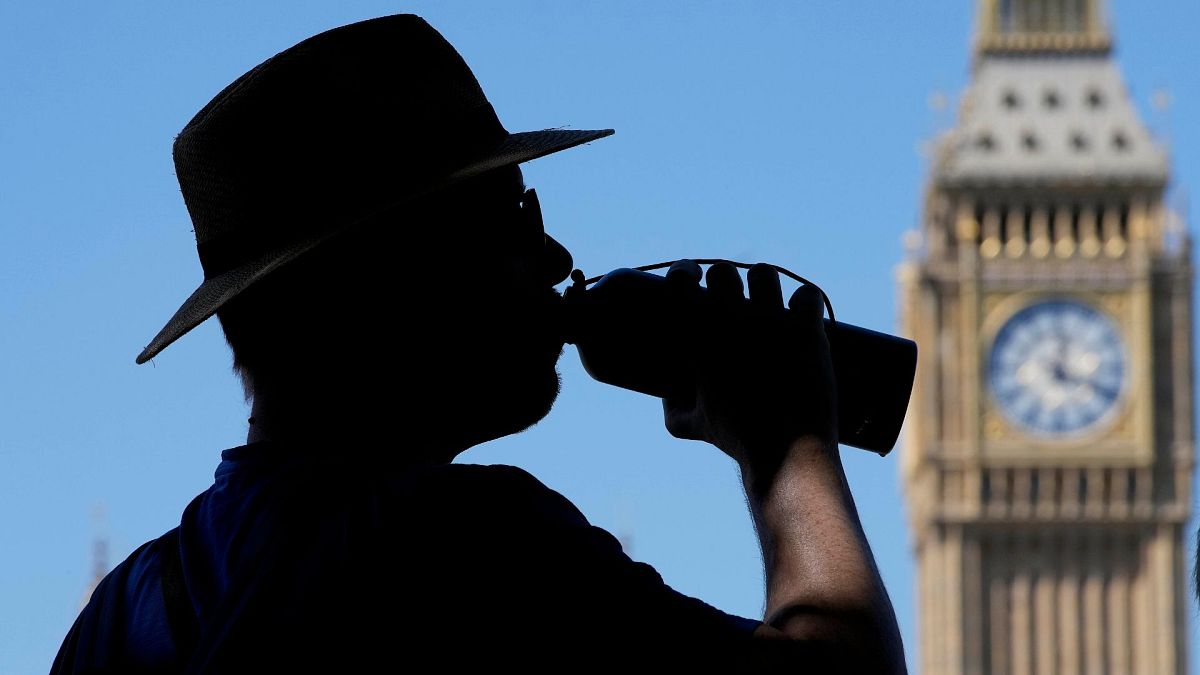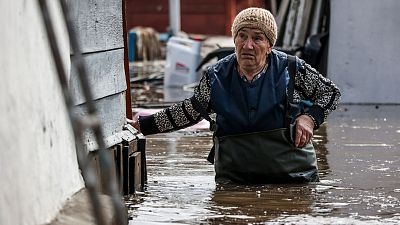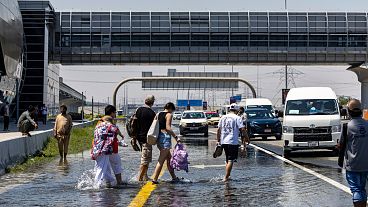This deadly warming phenomenon impacts three-quarters of Europeans.
Ever noticed that it tends to be far hotter in cities than the countryside? This is because of the urban ‘heat island’ effect.
This is when heat is trapped between tall buildings and absorbed by the large amounts of asphalt and concrete found in cities. It is then released back into the air.
Around three quarters of Europeans live in urban areas, and this is expected to increase in the coming years.
Larger cities tend to experience stronger heat stress, according to the EU’s Copernicus Climate Change Service (C3S). The centres of London and Paris, for example, regularly record temperatures of around 4C higher than rural surroundings at night.
Heat islands not only make life uncomfortable, they can be dangerous. High temperatures can cause health issues like heatstroke and respiratory problems as well as contributing to climate change.
EU research found that higher city temperatures due to the urban heat island effect were associated with 6,700 premature deaths in summer 2015
With Europe’s cities recording some of their hottest temperatures ever during the latest bout of heatwaves, here’s what’s behind deadly urban heat and what we can do about it.
What causes urban heat islands?
Natural landscapes filled with forests, grassland and rivers do not absorb or retain the sun’s heat in the same way as urban settings.
Cities are typically made up of asphalt, steel and brick - dark materials that easily absorb light and convert it into heat. They also do not allow water to flow through them, leaving them with nothing to cool them down.
The heat absorbed by the buildings is radiated back into the air at night, creating a warming effect.
Cities also tend to be built up with tall buildings packed closely together, which prevents air flow and further reduces the ability of buildings to stay cool.
Pollution from human activities like driving and industry adds to the effect by trapping solar radiation.
How can we beat the urban heat island effect?
While it’s tempting to crank up the air conditioning in the baking city heat, this is not the answer. Along with electric fans, air con units consume 10 per cent of global electricity, contributing massively to greenhouse gas emissions and global warming.
Luckily, there are other ways to combat the heat island effect.
Lighter materials reflect sunlight, so using these in cities could help reduce temperatures.
Painting rooftops white, in particular, can help keep buildings cool. Roads, pavements and car parks can also be painted with a reflective grey coating to lower the overall temperature of a city or town. Using permeable materials could also help.
Trees, on the other hand, act as nature’s air conditioner by releasing water vapour into the air. They also provide shade for both people and the ground. Research shows that adding trees to cities can lower temperatures between 2C to 10C depending on local conditions.
Planting gardens on rooftops or adding vertical gardens to buildings can help increase greenery where space is limited. Adding more water surface to cities can also help cool them.
Other design factors, like adding solar panels and moveable window shades that adjust with the sun’s movement, can further help shield buildings from heat.
Reducing road traffic in cities, such as by introducing low emissions zones and encouraging use of public transport, can reduce heat-trapping pollution.



